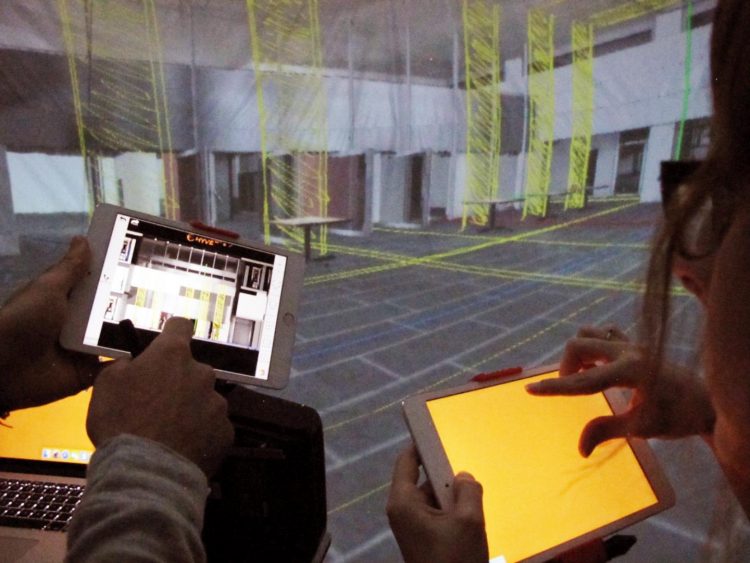Why use a 2-D cursor in a 3-D world? Computer cursors are going 3-D!

Researchers at the University of Montreal have developed techniques that enable computer cursors to interact in 3-D in single or multiuser, local or remote collaboration scenarios. The system, unveiled today at the SIGGRAPH 2015 Conference in Los Angeles, is not so much about turning Word into an IMAX experience as offering designers an opportunity to navigate through and modify their creations manipulating 3-D objects with 3-D interactions. Credit: Hybridlab, Université de Montréal
Researchers at the University of Montreal have developed techniques that enable computer cursors to interact in 3D in single or multiuser, local or remote collaboration scenarios. The system, unveiled today at the SIGGRAPH 2015 Conference in Los Angeles, is not so much about turning Word into an IMAX experience as offering designers an opportunity to navigate through and modify their creations manipulating 3D objects with 3D interactions.
“Our new technology challenges the notion of what a cursor is and does,” explained lead researcher Professor Tomás Dorta, of the university's School of Design. “The cursor becomes a drawing and controlling plane”. The techniques we're unveiling today involves using a tablet to control the cursor, but as it does not necessarily rely on external tracking of the user's movements, eventually other devices could be used, such as smart phones or watches.”
What does control plane mean? “We use a Butterfly-net analogy to explain how the cursor selects objects in space – the users simply sweep the 3D cursors through,” Dorta said. “For the manipulations of objects, the users can use gestures and movements such as pinching and orientation.”
The cursor is in fact being demonstrated within the researchers' Hyve-3D design system, a full scale immersive 3D environment that enables users to create drawings on hand-held tablets, which can then be manipulated on the tablets to create a 3D design within the space. As the designers are immersed in their work, for example designing a living room, they can test different furniture options according to the scale and even work on the interior detailing.
The immersive images are the result of an optical illusion created by a high-resolution projector, a specially designed 5m-diameter spherically concave fabric screen and a dome mirror projecting the image onto the screen. Specialized techniques render the 3D scene onto a spherical projection in real-time
Univalor, the university's technology commercialization unit, is supporting the market launch of the Hyve-3D system and the 3D cursor, via the startup Hybridlab Inc. Several patents are pending. “Beyond its utility for sketching, we believe the 3D cursor has applications in a wide range of fields, such as architectural design, medical imaging and of course computer games. This isn't a gimmicky rebirth of the cursor, it's about rethinking how humans interact with computers as part of the creative process,” Dorta said.
Media Contact
All latest news from the category: Event News
Newest articles

Parallel Paths: Understanding Malaria Resistance in Chimpanzees and Humans
The closest relatives of humans adapt genetically to habitats and infections Survival of the Fittest: Genetic Adaptations Uncovered in Chimpanzees Görlitz, 10.01.2025. Chimpanzees have genetic adaptations that help them survive…

You are What You Eat—Stanford Study Links Fiber to Anti-Cancer Gene Modulation
The Fiber Gap: A Growing Concern in American Diets Fiber is well known to be an important part of a healthy diet, yet less than 10% of Americans eat the minimum recommended…

Trust Your Gut—RNA-Protein Discovery for Better Immunity
HIRI researchers uncover control mechanisms of polysaccharide utilization in Bacteroides thetaiotaomicron. Researchers at the Helmholtz Institute for RNA-based Infection Research (HIRI) and the Julius-Maximilians-Universität (JMU) in Würzburg have identified a…



